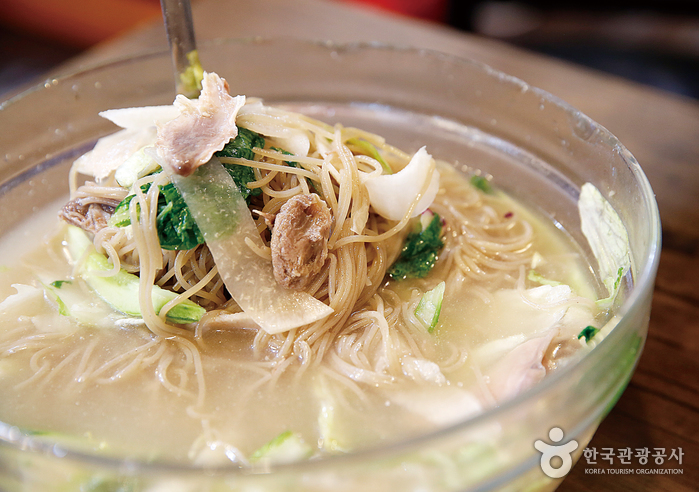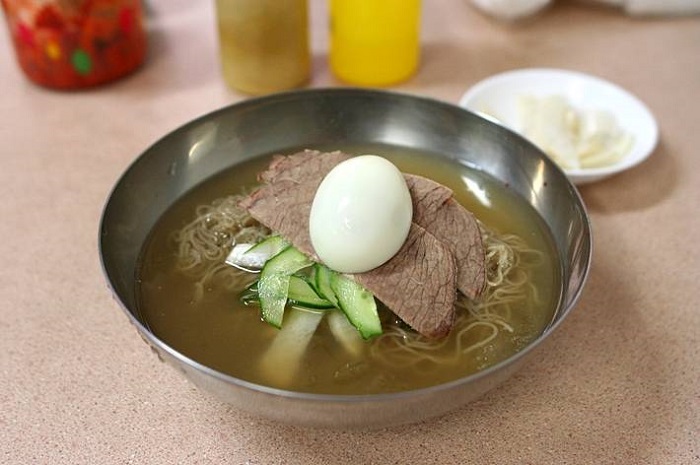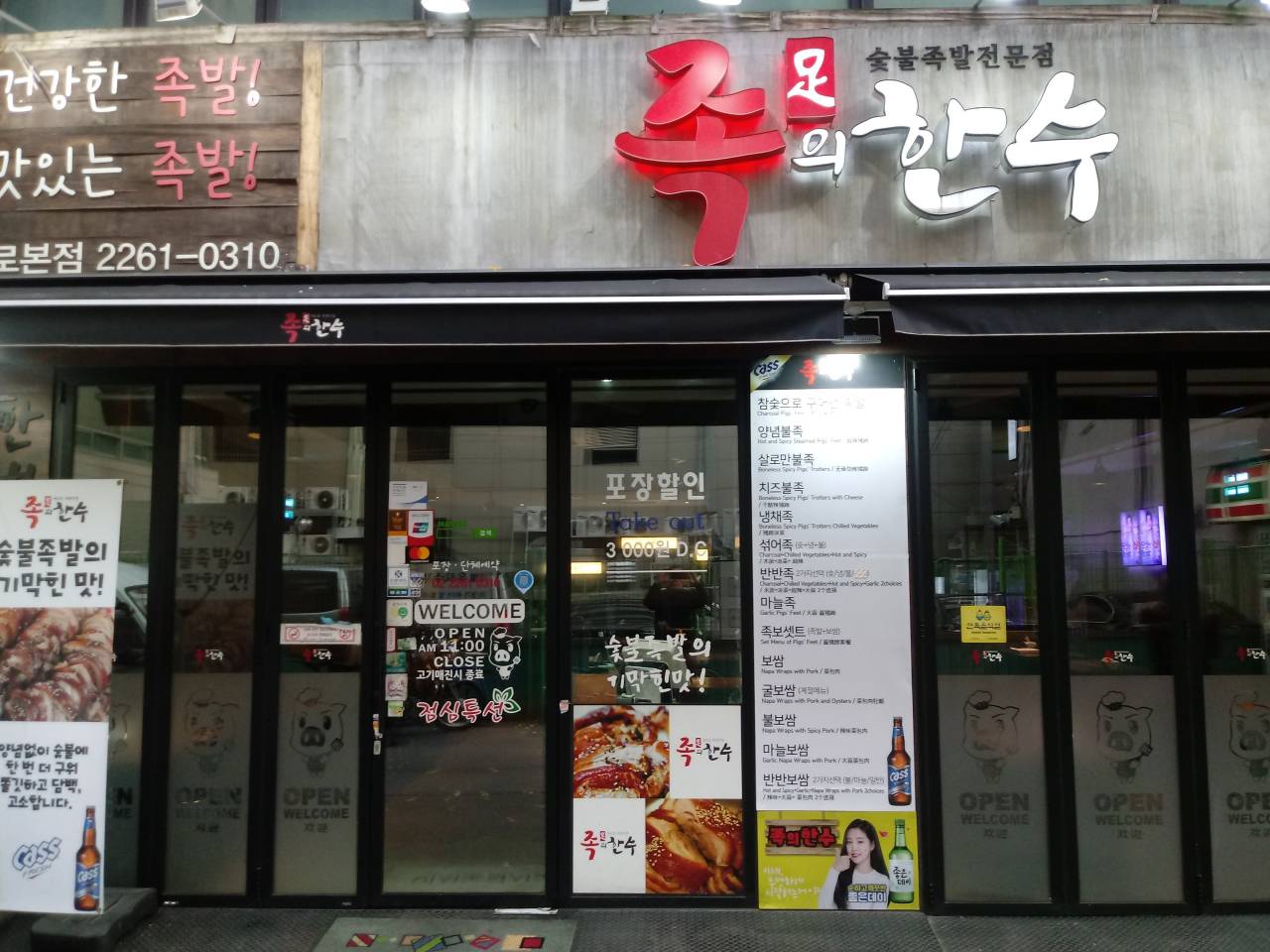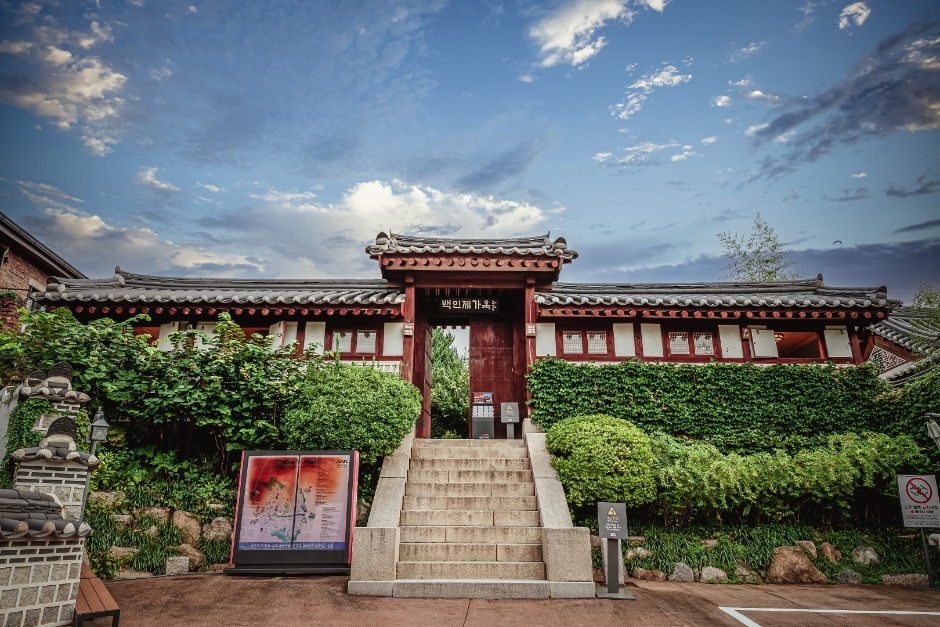Jigum - Jongno Branch [Tax Refund Shop] (JIGUM 종로)
4.8Km 2024-04-18
F1, F2, 21-8, Bukchon-ro, Jongno-gu, Seoul
-
Pyeongnaeok (평래옥)
4.8Km 2021-03-22
21-1, Mareunnae-ro, Jung-gu, Seoul
+82-2-2267-5892
This store, which has been around since 1950, always has a long line of customers. A Pyeongyang cold buckwheat noodles specialty restaurant located in Jung-gu, Seoul. The representative menu is Pyeongyang cold buckwheat noodles.
Yujin Sikdang (유진식당)
4.8Km 2021-03-29
40, Jong-ro 17-gil, Jongno-gu, Seoul
+82-2-764-2835
It is a restaurant in Jongno where people wait in line to enjoy its dishes. This restaurant's signature menu is Pyeongyang cold buckwheat noodles. This Korean dishes restaurant is located in Jongno-gu, Seoul.
Tanello Jewellery [Tax Refund Shop] (타넬로(모두디자인컴퍼니))
4.8Km 2024-04-16
1F, 10, Bukchon-ro 5-gil, Jongno-gu, Seoul
-
LG Best Shop - Eunpyeong Branch [Tax Refund Shop] (엘지베스트샵 은평점)
4.8Km 2024-04-18
153, Eunpyeong-ro, Eunpyeong-gu, Seoul
-
Olive Young - Jongno YBM Branch [Tax Refund Shop] (올리브영 종로YBM)
4.8Km 2024-04-19
104, Jong-ro, Jongno-gu, Seoul
Hanji House (한지가헌)
4.8Km 2025-07-25
31-9 Bukchon-ro, Jongno-gu, Seoul
Hanji House was founded to pass on the cultural heritage of hanji, traditional Korean paper, as well as to promote its excellence and uses in everyday life. The center is operated by Korea Craft & Design Foundation, and offers a variety of programs that consist of exhibitions, hands-on activities, classes, and marketing hanji products. On the first floor is Hanji Showroom, where various exhibitions take place to showcase hanji of the past and the present. The basement floor comprises Hanji Open Archive, Hanji Print Studio, and Hanji Workroom, where most of the hands-on activities and classes are held. Hanji House also offers a docent program for exploring the whole area.
Jogui Hansu (족의한수)
4.8Km 2024-10-15
93-1, Supyo-ro, Jongno-gu, Seoul
+82-2-2261-0310
A pig's trotter(s) specialty restaurant located in Jongno, Seoul. This restaurant's signature menu is braised pigs' feet. A restaurant serving both charcoal-grilled jokbal (pig's trotter) and spicy jokbal.
Baek In-je House (백인제가옥)
4.8Km 2024-10-15
16 Bukchon-ro 7-gil, Jongno-gu, Seoul
+82-2-724-0200
Baek In-je House, located in Bukchon Hanok Village, is a hanok built during the Japanese administration period that portrays modern hanok features. The structure consists of a main room offering a good view of the whole village, spacious bedrooms, a large garden, and annex buildings. As it maintains the beauty of a traditional hanok while incorporating the modern trend of its time, Baek In-je House is considered to be highly valuable in means of both architecture and history, representing the Bukchon Hanok Village together with Yun Bo-seon House.
Baek In-je House was built from black pine, which was first introduced in Seoul during the Gyeongseong Expo in 1907, distinguishing itself from other upper-class houses of its time. Unlike other traditional hanok designs that separate the main building from the other rooms, Baek In-je House connects the two with a hallway, allowing convenient access between the two structures. The house also consists of a Japanese-style hallway and floor mat rooms, reflecting the interior trends of that period. Baek In-je House is also unique in that the main room is partially built as a two-story structure, a style that was never seen in any traditional hanok built during the Joseon period.
![Jigum - Jongno Branch [Tax Refund Shop] (JIGUM 종로)](http://tong.visitkorea.or.kr/cms/resource/52/2889052_image2_1.jpg)



![Tanello Jewellery [Tax Refund Shop] (타넬로(모두디자인컴퍼니))](http://tong.visitkorea.or.kr/cms/resource/31/2887931_image2_1.jpg)
![LG Best Shop - Eunpyeong Branch [Tax Refund Shop] (엘지베스트샵 은평점)](http://tong.visitkorea.or.kr/cms/resource/76/2890276_image2_1.jpg)
![Olive Young - Jongno YBM Branch [Tax Refund Shop] (올리브영 종로YBM)](http://tong.visitkorea.or.kr/cms/resource/27/2878227_image2_1.jpg)


 English
English
 한국어
한국어 日本語
日本語 中文(简体)
中文(简体) Deutsch
Deutsch Français
Français Español
Español Русский
Русский